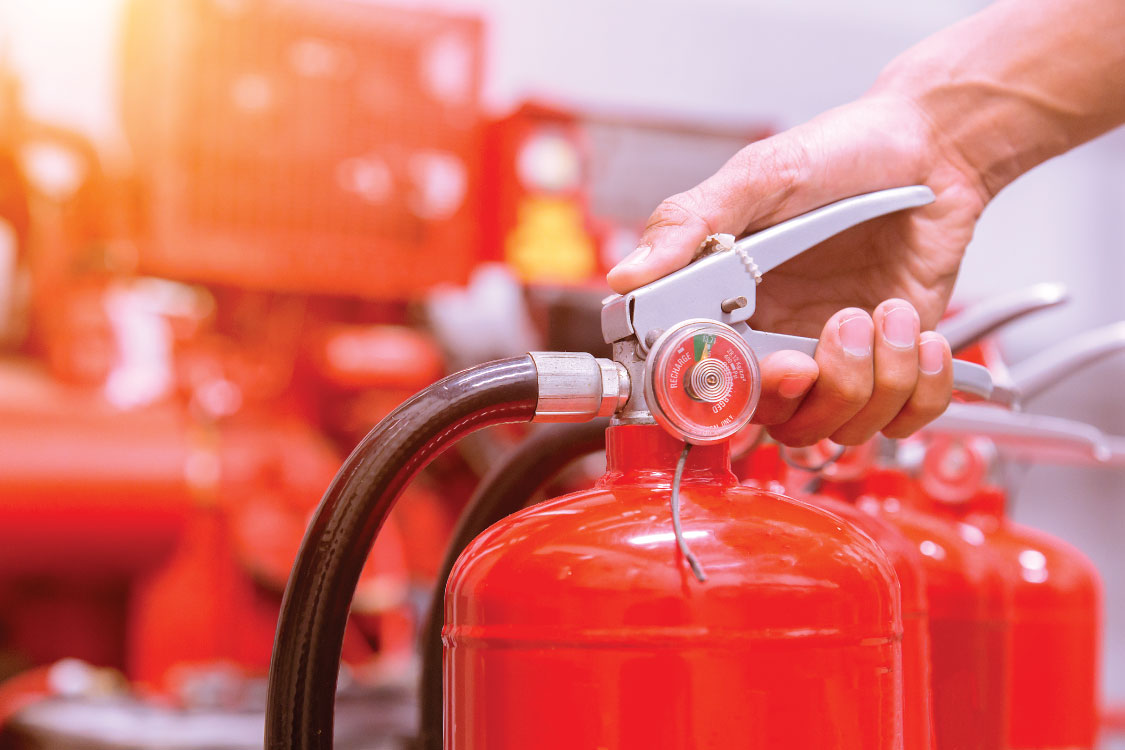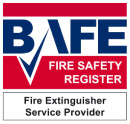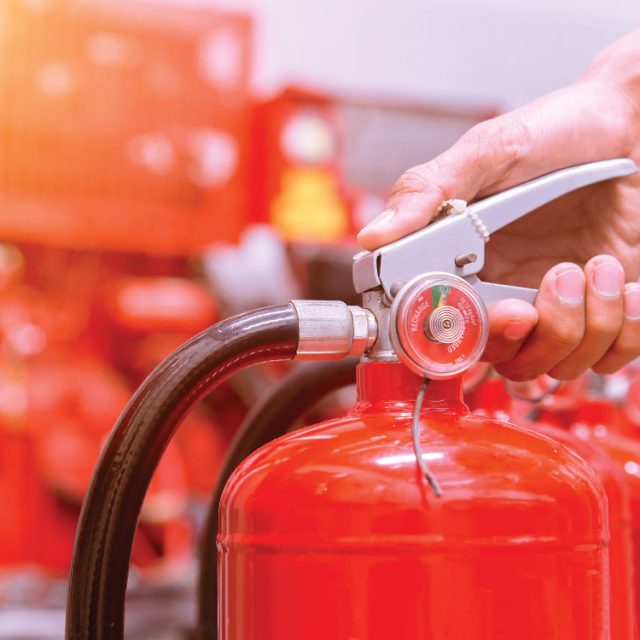3 March 2021
The Different Types of Fire Extinguisher
Being aware of the different types of fire extinguishers is crucial for quick and effective reactions in the event of an emergency. Of course, you should only attempt to combat a fire if it is safe to do so – call the fire brigade if you have any doubt about your ability to tackle a fire. In this article, Fire & Security Group will detail the different types of fire extinguisher and how to use them.

Why do we have different types of fire extinguisher?
The reason for different types of fire extinguishers is the various types of fires that can break out in certain environments and situations. As each extinguisher contains a different substance (powder, water, etc.), so they’ll only be suitable for fires involving certain substances. For example, a water extinguisher would make an oil fire worse as opposed to nullifying it.
Identifying the different types of fire extinguishers
There are five different types of fire extinguisher available, and they’re set apart by different coloured bands.
- Foam extinguishers – cream coloured band
- Wet chemical extinguishers – yellow band
- Dry powder extinguishers – blue band
- CO2 extinguishers – black band
- Water extinguishers – red band
How do the different types of fire extinguishers work?
Each type of fire extinguisher contains a certain substance that is designed to combat certain types of fires. The substance contained in each extinguisher is identified by the name of said extinguisher, but let’s look into why these substances are used.
Foam Fire Extinguishers
Used for: Fires involving organic materials (e.g. paper) and flammable liquids (e.g. petrol, paint)
Foam extinguishers work by suffocating the fire. When the extinguisher is deployed, the foam creates a blanket of sorts, which smothers the fire and prevents any oxygen from getting to it. The nozzle on the foam extinguisher allows for a wide area to be covered for swift neutralisation of the fire.
Wet Chemical Extinguishers
Used for: Fires involving organic materials (e.g. paper) and fires involving cooking oils and fats
Wet chemical extinguishers function in a similar manner to foam extinguishers, acting as a blanket to cover the fire and suppress it. Unlike foam extinguishers, the foam ‘blanket’ crusts on the top of the oil to avoid reignition of the fire. The chemicals also help to lower the temperature of the liquid.
Dry Powder Extinguishers
Used for: All types of fires EXCEPT fires involving cooking oils and fats
Dry powder extinguishers cover the fire in a layer of dust, which creates a barrier between the burning material and the oxygen in the air, preventing the fire from growing. The powder obstructs the chemical reaction in the fire, too.
CO2 Fire Extinguishers
Used for: Fires involving flammable liquids (e.g. petrol, paint) and electrical equipment
Carbon dioxide extinguishers work through the displacement of oxygen. When the oxygen is displaced, it cannot exacerbate a fire. Due to the cold temperature of the CO2, the risk of the fire restarting is minimised, too.
Water Fire Extinguishers
Used for: Fires involving organic materials (e.g. paper)
Water extinguishers are fairly self-explanatory: the jet of water cools and extinguishes the fire, and as the surrounding area remains wet, the fire is prevented from starting again. The use of water is why these extinguishers should not be used on electrical fires.
Depending on the type of premises you own or operate, you’ll have a pressing need for certain fire extinguishers and a lesser need for others. A restaurant, for example, will need wet chemical extinguishers for protection from cooking oil fires, as well as dry powder extinguishers to cater for other types of fire. A wet chemical extinguisher won’t be a priority for an office, though; dry powder and foam extinguishers will be more suited to the hazards in the building.
By carrying out a fire risk assessment, you can ascertain which kinds of extinguishers are right for your building. It is crucial that you have the right types of extinguishers installed and that those extinguishers are fully operational – using a faulty or incorrect extinguisher can have potentially fatal consequences.
Fire and Security Group are qualified, experienced and accredited suppliers of fire extinguishers of all kinds for commercial properties around the UK. We supply, install and maintain all types of fire extinguishers in any quantity, ensuring you have an important line of defence against fire. For more information, simply contact us today and we’ll be happy to help.


